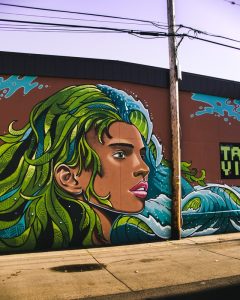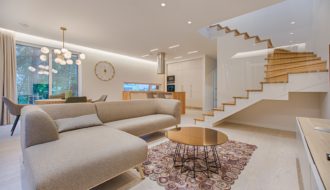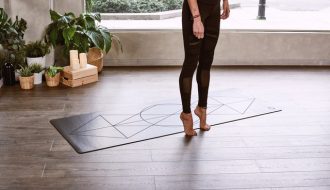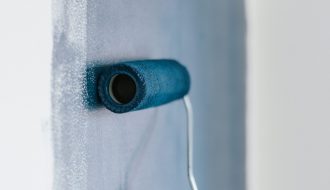A movement, more powerful than a chain of drake low loaders, with roots in Russia, Constructivism, was initially an architectural and art movement. It resisted the concept of art for arts’ sake along with the conventional bourgeois type of society to which that preceding artwork was catered. Rather it preferred art for a practice geared towards societal change or which could serve a social function. Created after World War I, the motion sought to induce people to reconstruct society in a Utopian version instead of the one which had contributed to this war.
The expression construction artwork was initially coined by Kasmir Malevich with regard to this job of Aleksander Rodchenko. Graphic Design from the constructivism movement ranged from the creation of merchandise packaging to logos, posters, book covers, and ads. Rodchenko’s picture design functions became an inspiration to a lot of individuals in the western world such as Jan Tschichold along with the design theme of the constructivists remains borrowed, and stolen, much of graphic design now. The movement of Constructivism opened up the door by the construction industry for art for a home extension, therefore interior design.

Key Characteristics of Constructivism Art:
– Constructivism has three elements – abstraction, functionalism, and utilitarianism. It focused on the building of the art rather than what it was made up of, which distinguished the movement by the standard art at the time. Constructivism art was devoted to modernity.
– It tried to reach universal form by consisting of both two-and-three-dimensional art forms. It consisted of topics that were often geometric, minimal, experimental, and seldom psychological. Constructivist artwork was usually broken down to its basic elements. This art form simplified everything about the basic level.
– New media was used in the production of artworks. Industrial materials like glass, steel, and plastic have been used in the artwork creation.
-This artwork would unite distinct sans serif fonts because of their visual properties and their meanings. Colours used in the artwork would be easy, flat, and symbolic. A white space was a part of the plan. Rather than hand-drawn illustrations, the photo-montage technique was often used.
The notion of Constructivism nursed the idea to increase mass production by the artists who researched decorative and applied arts. As a result, the Higher Art and Technical Studios trained its students in these art forms, which brought back the missing fascination with decoration of ceramics and fabric. Ilya Chashnik came up using unique ceramics which were composed of abstract two-dimensional types while Stepanova researched cloth design that had daring planes of colour and stroke components. El Lissitzky and Rodchenko received recognition for their works of graphic design and typography, which used bold colours and diagonal elements.
Art installations are becoming an increasing trend with the German city of Karlsruhe taking part in the phenomenon. In 2015, they staged a series of installations around the city which are themed around a different subject of interest: construction work.
The series is named The City Is a Star, and it concentrates on machines and materials of building work, a pointed out by Designboom. Karlsruhe, and its own regional ZKM Center for Art and Media, requested four artists to set up artwork that relates to building work across town, such as jobs by Hans Hollein and Tim Otto Roth.
But two of the four artists took the brief very literally. Austrian artist Erwin Wurm, whose piece, Truck, is literally a truck parked on a city road in Karlsruhe. Obviously, the body of the cargo curves upwards, which makes it seem like it has been stretched by a giant. Last week, the piece attracted a whole lot of attention on the web when outlets reported that a police officer had issued the truck a very real parking ticket (turns out it was later a prank ticket, as clarified by the town).
ZKM’s curators clarified that one often comes across pictures of an urban scenario where one is unsure as to if it emerged unintentionally or intentionally, whether it had been the consequence of accident or chance. Can it be thrown from the wall in a storm? Or is it among those automobiles of their future, which is ramped-up in inverse against the wall?
Another piece is from the Argentinian artist Leandro Erlich, who’s the master of eye-trolling. You have probably been exposed to Erlich’s earlier work, possibly his Swimming Pool installment, which lets you walk under a hyper-real fake pool, or Dalston House, a mirror installment with 2nd-storey additions which makes people feel as if they’re falling upwards.
Back in Karlsruhe, Erlich has set up a piece named Pulled From the Roots, a “home” that hangs from a genuine building crane on a genuine construction site in the city centre. It appears only real enough to deceive the eye until you see the “roots” dangling from the house’s base. The construction was made to appear like it belongs to some nearby set of homes, adding the emphasis of ‘pulled from the roots’.
It is an obvious ruse the moment you find the origins, naturally. It is more entertaining to imagine someone walking throughout town, perhaps late for work, viewing a home dangling from a crane from the corner of their eye and not observing the difference between a real or ‘art installed’ home.







